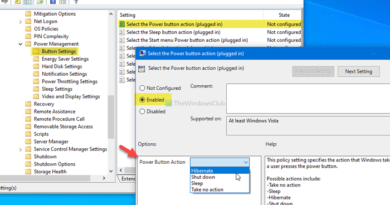Linux Foundation Certified System Administrator (LFCS) – learn LFCS
Link to this course(special discount)
https://www.udemy.com/course/linux-foundation-ceritifed-system-administrator-lfcs/?ranMID=39197&ranEAID=Gw%2FETjJoU9M&ranSiteID=Gw_ETjJoU9M-cZOhlUIcMlfYMPZNaA_Ofg&utm_source=aff-campaign&utm_medium=udemyads&LSNPUBID=Gw%2FETjJoU9M
Linux Foundation Certified System Administrator (LFCS) – learn LFCS
What you will learn in this course ?
What you’ll learnStudents will be in a good position to pursue a career in Linux and also will be able to take the certification exam.
With a combination of lectures, hands-on exercises, quizzes and demos the students will get a very good grip of the Linux operating system and will be confident enough to take the test by the end of the course. The LFCS certification exam is performance based and hence needs a lot of practice, not memorization or brain dumps. You will be required to perform tasks on a live system and your score will be based on the correctness of the tasks performed. It is a 2 hour test and requires a 74% passing score.LFCS is very high in-demand certification that is OS agnostic. Unlike some other certifications out there, you won’t be required to stick to only one operating system. You will be given a choice to either pick up CentOS or Ubuntu as the operating system of your choice. Both of these operating systems are available for free and I will show you how to download and install them in a virtual environment in the first section of the course.This course will cover the following domains:Understand and use essential tools
Access a shell prompt and issue commands with correct syntax Use input-output redirection Use grep and regular expressions to analyze text Access remote systems using SSH Log in and switch users in multiuser targets Archive, compress, unpack, and uncompress files using tar, star, gzip, and bzip2 Create and edit text files Create, delete, copy, and move files and directories Create hard and soft links List, set, and change standard ugo/rwx permissions Locate, read, and use system documentation including man, info, and files in /usr/share/doc
Operate running systems
Boot, reboot, and shut down a system normally Boot systems into different targets manually Interrupt the boot process in order to gain access to a system Identify CPU/memory intensive processes and kill processes Adjust process scheduling Manage tuning profiles Locate and interpret system log files and journals Preserve system journals Start, stop, and check the status of network services Securely transfer files between systems
Configure local storage
List, create, delete partitions on MBR and GPT disks Create and remove physical volumes Assign physical volumes to volume groups Create and delete logical volumes Configure systems to mount file systems at boot by universally unique ID (UUID) or label Add new partitions and logical volumes, and swap to a system non-destructively
Create and configure file systems
Create, mount, unmount, and use vfat, ext4, and xfs file systems Mount and unmount network file systems using NFS Extend existing logical volumes Create and configure set-GID directories for collaboration Configure disk compression Manage layered storage Diagnose and correct file permission problems
Deploy, configure, and maintain systems
Schedule tasks using at and cron Start and stop services and configure services to start automatically at boot Configure systems to boot into a specific target automatically Configure time service clients Install and update software packages from Red Hat Network, a remote repository, or from the local file system Work with package module streams Modify the system bootloader
Manage basic networking
Configure IPv4 and IPv6 addresses Configure hostname resolution Configure network services to start automatically at boot Restrict network access using firewall-cmd/firewall
Manage users and groups
Create, delete, and modify local user accounts Change passwords and adjust password aging for local user accounts Create, delete, and modify local groups and group memberships Configure superuser access
Manage security
Configure firewall settings using firewall-cmd/firewalld Create and use file access control lists Configure key-based authentication for SSH Set enforcing and permissive modes for SELinux List and identify SELinux file and process context Restore default file contexts Use boolean settings to modify system SELinux settings Diagnose and address routine SELinux policy violations
As with all Red Hat performance-based exams, configuration
linux foundation



